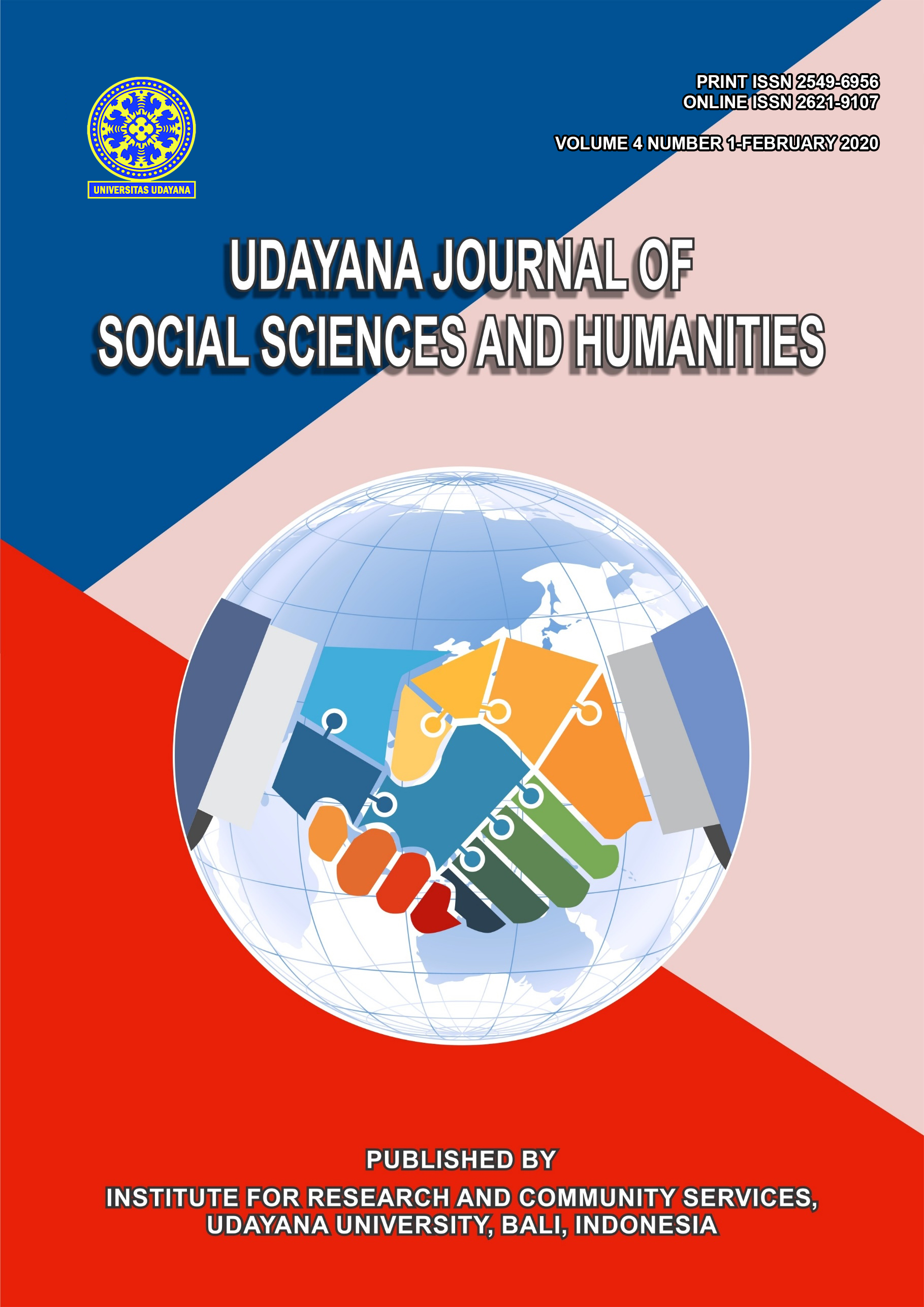The Translation of Metaphor from the Novel Beastly into Beastly, Beauty and the Beast Abad 21
Abstract
The translation is a written medium and useful connection to communicate with other people in a different language, culture, and background. Figurative language is widely used in any form of communication, such as in daily conversations, advertisements, articles in newspapers, novels, poems, etc. Figurative language often provides more effective means of saying what can be meant than a direct statement. This writing is aimed at finding out the types of metaphors in translating the novel of Beastly based on the theory of Kovecses. The analysis was presented in the form of words and sentences. The result of this study showed that the use of a structural metaphor was mostly used in this study based on the data in the novel Beastly. The structural metaphor occurred as the source domain provides a relatively rich knowledge structure for the target or language concept.
Downloads
References
[2] Basnett, Susan - Mc Guire. 1985. Translation Studies. London and New York: Methuen, Inc.
[3] Bell, R.T. 1991. Translation and Translating: Theory and Practise. London: Longman.
[4] Departemen Pendidikan Nasional. 2008. Kamus Besar Bahasa Indonesia Pusat Bahasa. Jakarta: Gramedia Pustaka Utama.
[5] Flinn, Alex. 2011. Beastly. New York: Harper Collins Publisher
[6] Flinn, Alex. 2011. Beastly. Jakarta: PT. Gramedia Pustaka Utama
[7] Hatim, Basil. 2001. Teaching and Researching Translation. England: Longman.
[8] Hornby, A.S. 2010. Oxford Advanced Learner’s Dictionary 7th Edition. Oxford: Oxford University Press.
[9] Larson, M.L. 1989. Meaning-Based Translation. A Guide to Cross-Language Equivalence. Second Edition. Lanham: University Press.
[10] Larson, Mildred L. 1998. Meaning - based Translation. America: University Press of America, Inc.
[11] Newmark, Peter. 1988. A Textbook of Translation. London: Prentice Hall International
[12] Nababan, M, Rudolf. (2008). Teori Menerjemah Bahasa Inggris.Yogyakarta: Pustaka Pelajar.
[13] Nababan et, al. (2012). Pengembangan Model Kualitas penerjemahan. Artikel Kaian Linguistik dan Sastra.Vol. 24, No. 1.
[14] Nida, E.A. and Taber. 1974. The theory and Practice of Translation. Leiden: E.J. Brill.
[15] Ortony, Andrew (ed.) 1979. Metaphor and Thought. Cambridge: Cambridge University Press.
[16] Sudrama, Ketut. 2003. Strategies For Translating into Indonesian English Metaphors in Novel ‘Master of the game’ by Sydney Sheldon (thesis). Denpasar : Udayana University.
[17] Vinay, Jean-Paul and Darbelnet Jean. 2000. A Methodology For Translation. In Venuti (ed.) 2000, London and New York: Routledge.
[18] Venuti, Laurence (ed.). 2000. The Translation Studies Reader. London and New York: Routledge.
[19] Naraswari, W, Siwi and Nugroho, R, Arief. (2015). Translation Procedures of Culture Bound Words Used in Visitor Guide of Jawa Tengah. Unpublished. Udinus. Semarang. Indonesia.






